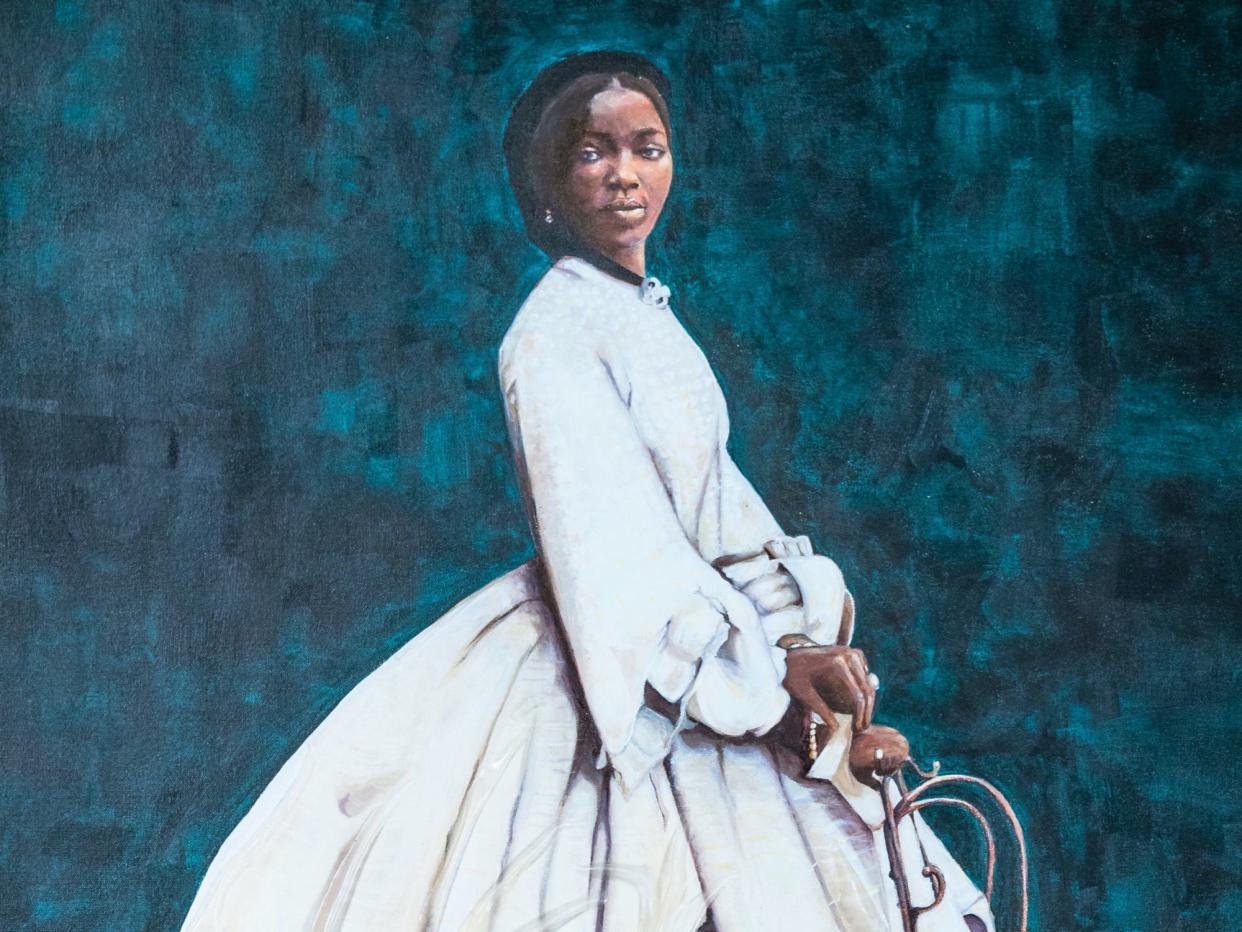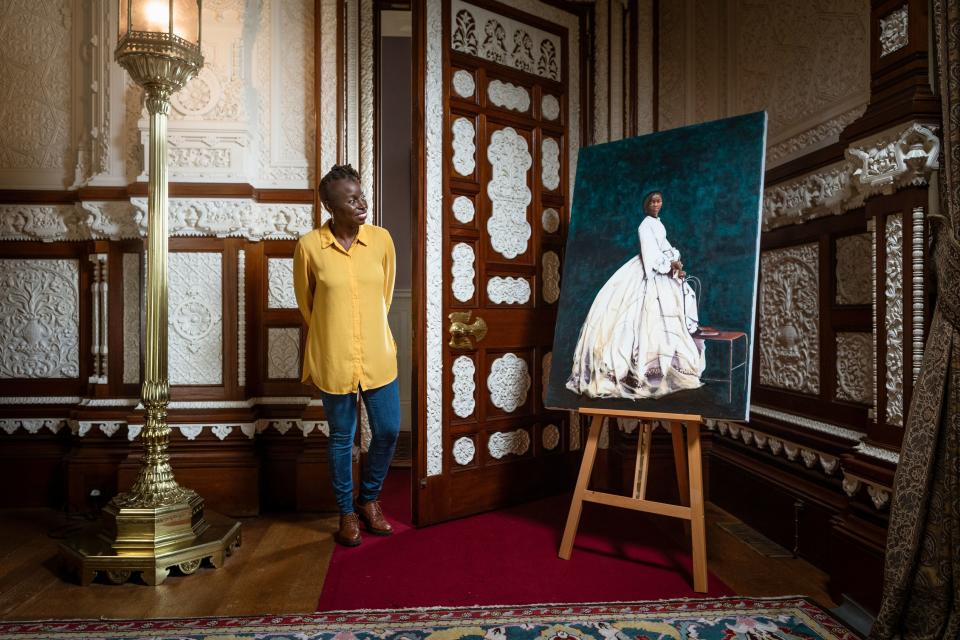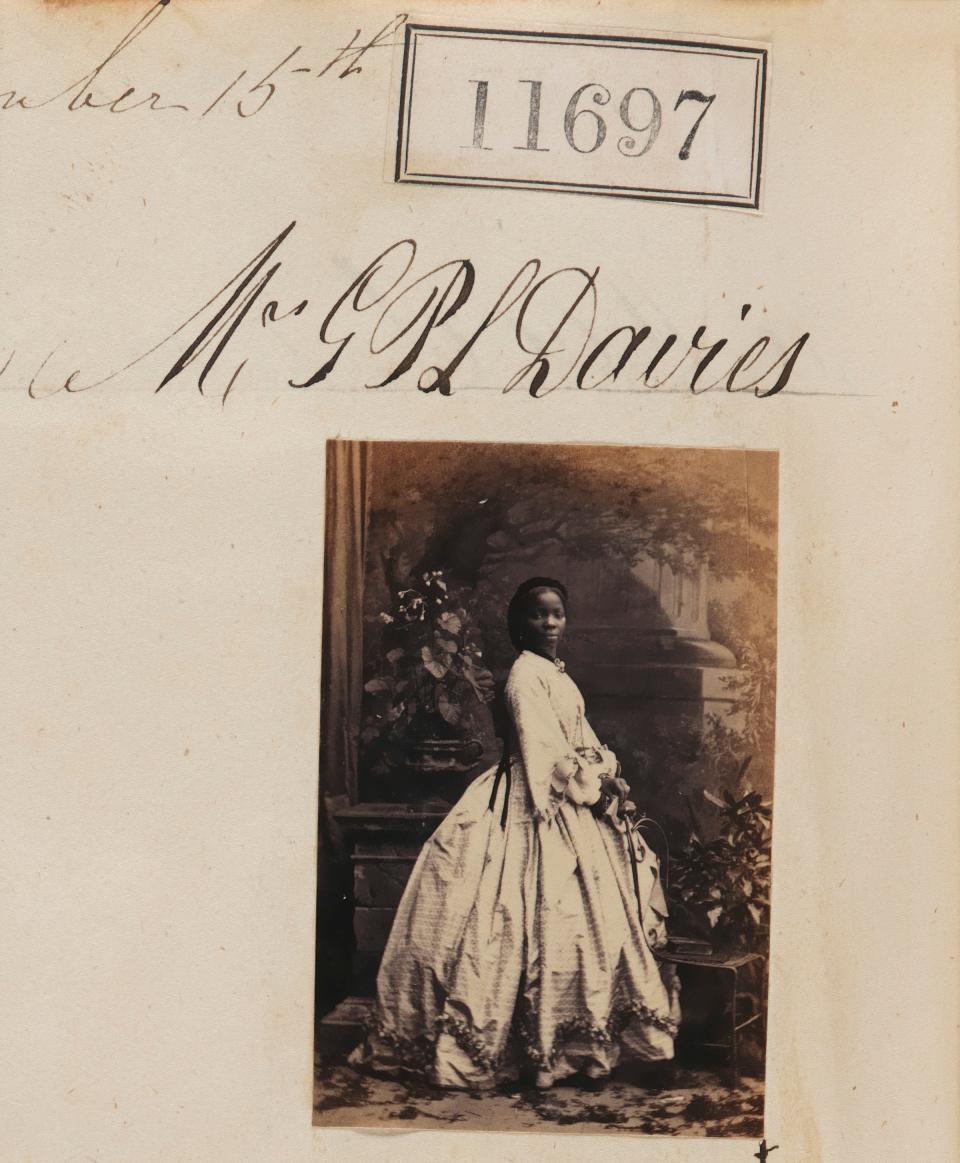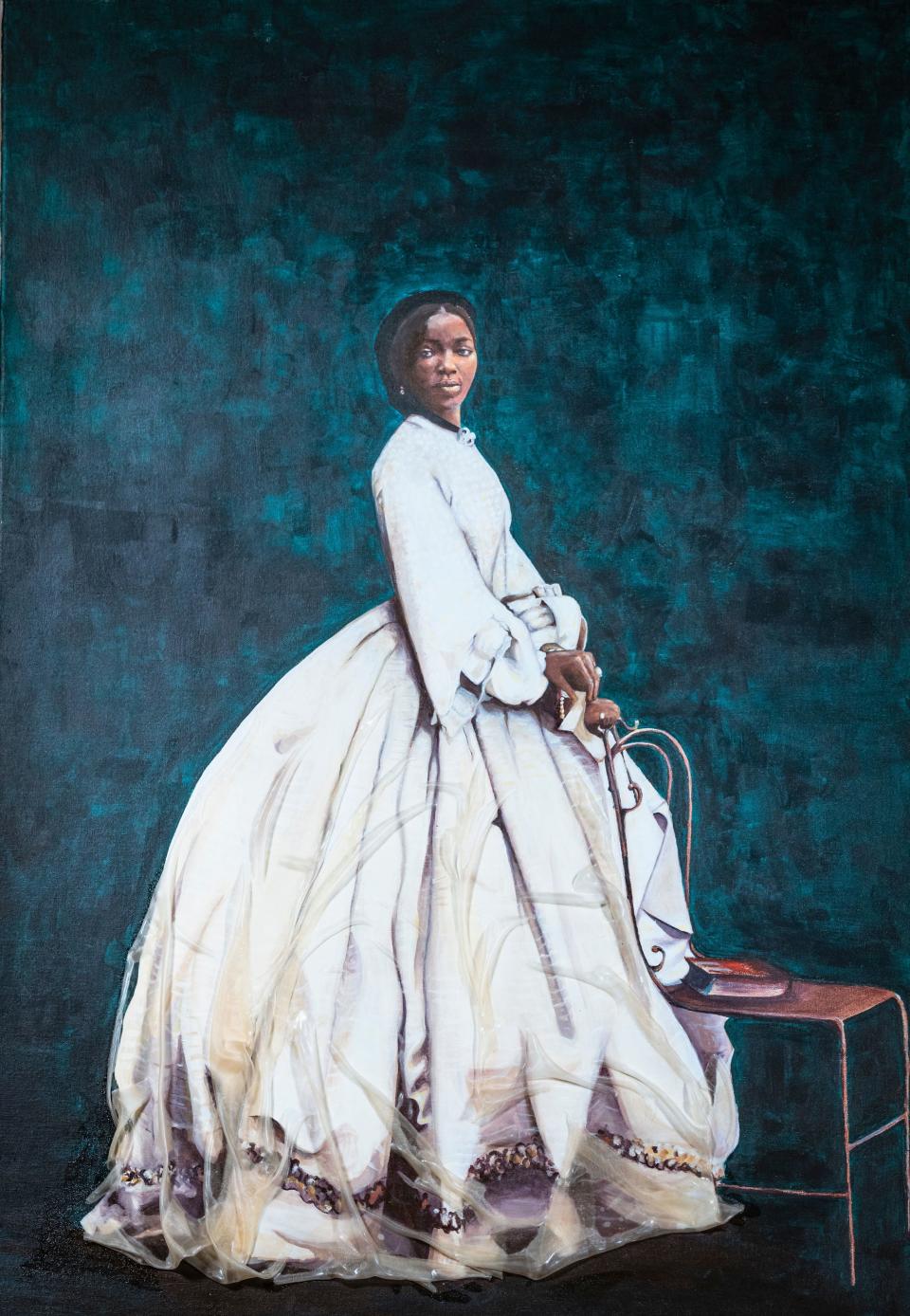English Heritage unveils portrait of Queen Victoria’s African goddaughter to mark Black History Month

A new portrait of Queen Victoria's African goddaughter has been unveiled as part of a plan to feature “overlooked” black figures across English Heritage sites.
The portrait of Sarah Forbes Bonetta, who was orphaned, keep as a state prisoner, and later sold into slavery at the age of five, will be displayed in Osborne House throughout Black History Month.
Ms Bonetta was first brought to England in 1850 after being presented as a “diplomatic gift” to Captain Frederick Forbes, who named her partly after his ship, the HMS Bonetta.
Captain Forbes later visited the King of Dahomey, as Queen Victoria's representative, in a bid to negotiate the suppression of slavery.
Over the years, Queen Victoria and Ms Bonetta met a number of times, including at the monarch's Osborne House on the Isle of Wight.
The monarch described Ms Bonetta as “sharp and intelligent” and became her godmother when she turned seven years old.
Queen Victoria paid for her education, and Ms Bonetta went on to become an accomplished musician and linguist, later naming her own child after the royal.
The painting was created by artist Hannah Uzor who said Bonetta “challenges our assumptions about the status of black women in Victorian Britain."
“To see Sarah return to Osborne, her godmother’s home, is very satisfying, and I hope my portrait will mean more [as] people discover her story,” Uzor said.

English Heritage said it will commission portraits of other historical black figures connected to its sites “and whose stories, like Bonetta's, have been previously overlooked”.
It added that it plans to bring information surrounding its connections to the slave trade “to the fore” next year across its properties.
"Black history is part of English history and, while we know we have more to do, English Heritage is committed to telling the story of England in full,” the charity said.

“There are a number of black figures from the past who have played significant roles at some of the historic sites in our care but their stories are not very well known.
"Starting with Sarah, our portraits project is one way we're bringing these stories to life and sharing them with our visitors."
Among the portraits to be displayed next year, include Rome's African-born emperor Septimius Severus, who strengthened Hadrian's Wall, and James Chappell, a 17th century servant at Kirby Hall in Northamptonshire, who saved the life of the country house's owner.

The news comes after the National Trust revealed 93 of its properties have links to historic slavery and colonialism, including Winston Churchill's Kent home Chartwell.
A report published by the trust detailed links to plantation owners and those who were paid compensation for enslaved people freed through abolition, as well as those who gained their wealth through the slave trade.
The portrait of Sarah Forbes Bonetta by Hannah Uzor is on display at Osborne House on the Isle of Wight from Wednesday October 7.
Read more
National Trust details links to slavery at 93 of its properties

